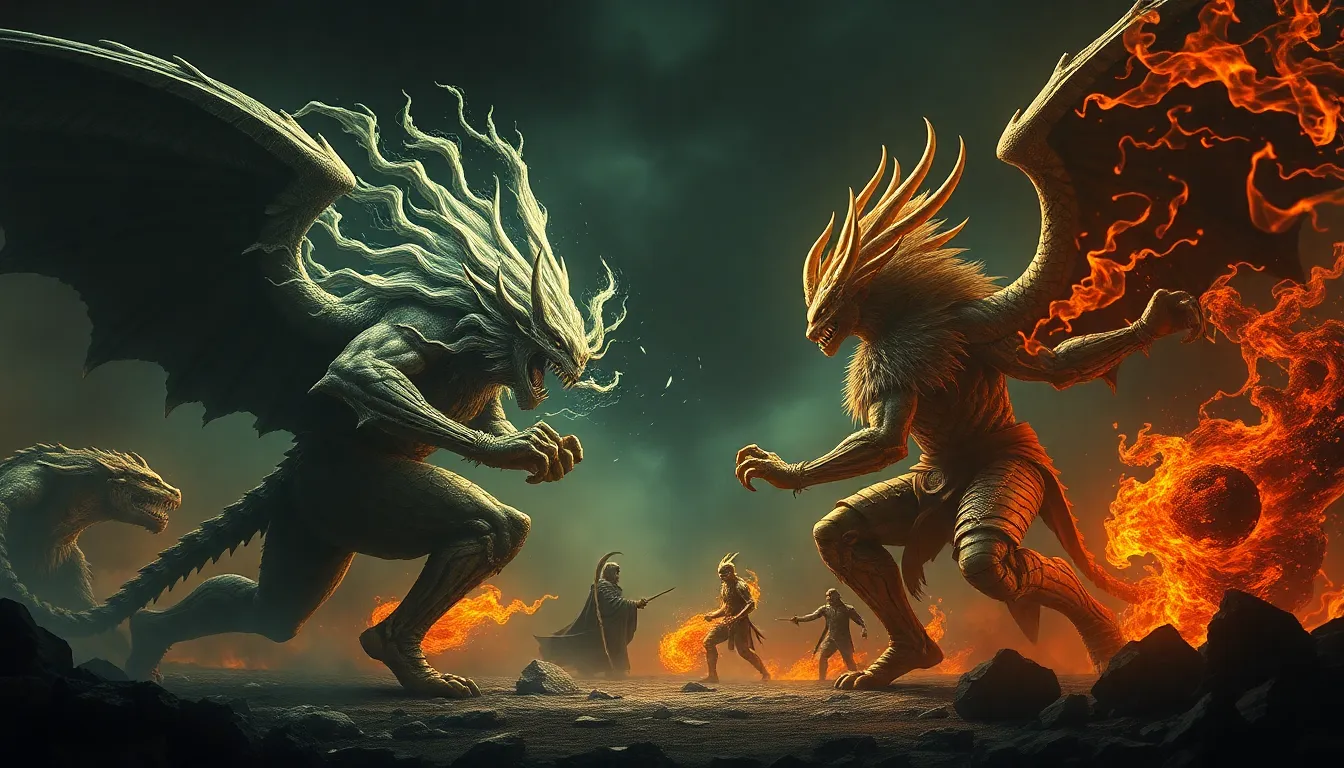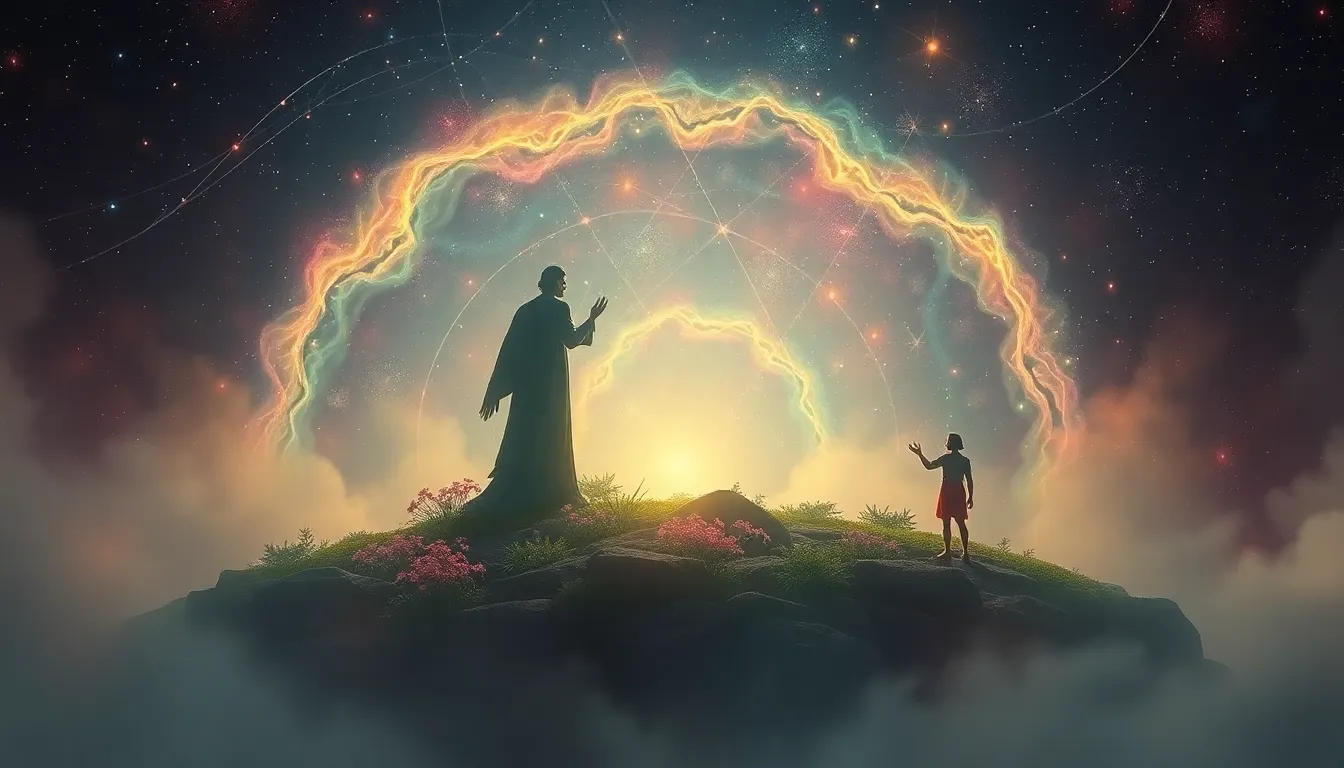From Gilgamesh to the Bible: Tracing the Roots of Flood Myths
I. Introduction
Throughout human history, flood myths have emerged in nearly every culture, serving as a powerful narrative framework to explain catastrophic events and existential themes. From the ancient tales of Mesopotamia to the stories woven into the fabric of the Bible, these myths often depict a world cleansed by water, rebirth, and divine intervention. This article explores the connections and origins of these flood narratives, shedding light on their significance in ancient literature and their lasting impact on human culture.
II. Understanding Flood Myths: Definition and Characteristics
Flood myths are legendary stories that feature a great flood sent by deities to destroy civilization, often sparing a select few who are tasked with preserving humanity. While these narratives vary significantly across cultures, certain common themes and characteristics are frequently observed:
- Divine retribution: Many flood myths depict the flood as a punishment for humanity’s sins or moral failings.
- Themes of destruction and rebirth: The flood serves not only as an end but also as a precursor to a new beginning, symbolizing renewal and hope.
The cultural significance of these myths extends beyond their narrative frameworks; they often carry profound moral lessons and reflect the values and beliefs of the societies from which they originate.
III. The Epic of Gilgamesh: The First Recorded Flood Myth
The Epic of Gilgamesh, dating back to around 2100 BCE, is one of the earliest known works of literature and contains one of the first recorded flood myths. In this epic, the character Utnapishtim recounts to Gilgamesh how he was chosen by the gods to survive a great flood that would wipe out humanity.
Utnapishtim builds an enormous ark to save his family and a selection of animals, paralleling the well-known story of Noah’s Ark. This narrative not only highlights the theme of divine punishment but also emphasizes the importance of preserving life.
The historical context of the Epic of Gilgamesh reveals much about ancient Mesopotamian culture, where the unpredictability of the Tigris and Euphrates rivers often led to devastating floods. These experiences likely inspired the creation of such myths as a means to explain and cope with their reality.
IV. The Biblical Account: Noah’s Ark
The flood story in the Book of Genesis presents a familiar yet distinct version of the flood myth. God’s decision to cleanse the earth of its wickedness by sending a flood leads Noah to build an ark, saving his family and representatives of each animal species.
A comparison between Utnapishtim’s narrative and Noah’s Ark reveals striking similarities, including the construction of an ark, the sending of birds to find dry land, and the eventual promise of a renewed world. However, the theological implications differ significantly. In the biblical account, the flood serves not only as punishment but also as a covenant, symbolizing God’s grace and mercy towards humanity.
V. Other Ancient Flood Myths: A Global Perspective
Flood myths are not confined to Mesopotamia and the Bible; they appear in various forms across the globe. Here are some notable examples:
- The Atrahasis Epic: Another Mesopotamian account that describes a flood sent by the gods to reduce the human population.
- Matsya Avatar: In Hindu mythology, Lord Vishnu takes the form of a fish to save humanity from a great deluge.
- Native American flood stories: Many tribes, including the Ojibwe and the Hopi, have their own variations of flood myths, often involving themes of purification and survival.
These diverse narratives reflect the universal human experience of natural disasters and the quest for meaning in the face of overwhelming forces.
VI. The Role of Geography in Shaping Flood Narratives
Geography plays a significant role in the development of flood myths. The flat plains of Mesopotamia, prone to flooding from river overflows, influenced the creation of stories that mirrored the peoples’ experiences.
Other regions also crafted their flood myths based on local geography:
- Rivers and rain patterns: Societies dependent on rivers for agriculture often viewed floods as both a threat and a source of renewal.
- Comparative analysis: Cultures in mountainous regions might depict floods differently, focusing more on landslides or tsunamis.
VII. Flood Myths as Reflection of Human Experience
Beyond their narrative significance, flood myths can be interpreted psychologically. They often symbolize fundamental human fears—of loss, chaos, and the unknown. The recurring theme of survival in these stories resonates deeply, as they encapsulate the struggle to endure and rebuild after catastrophic events.
The role of oral traditions also cannot be understated; these stories have been preserved and passed down through generations, evolving with cultural changes while retaining core themes. Flood narratives symbolize not only natural disasters but also societal changes, reflecting how communities adapt and respond to challenges.
VIII. Archaeological and Historical Evidence of Ancient Floods
Archaeological findings have provided evidence supporting the occurrence of significant floods in ancient history. For instance, the Black Sea deluge theory posits that a massive flood occurred around 5600 BCE, which could have inspired various flood myths across cultures.
These events likely influenced the myth-making process, as societies attempted to explain and make sense of their experiences with catastrophic flooding.
IX. The Evolution of Flood Myths in Modern Literature and Culture
Flood myths have undergone significant adaptations in contemporary literature and culture. Modern authors have reimagined these ancient stories to explore themes of environmentalism, survival, and the human condition.
Examples of flood myths in popular culture include:
- Films like 2012 and The Day After Tomorrow, which depict apocalyptic flood scenarios.
- Literary works such as The Grapes of Wrath, which metaphorically use floods to represent societal struggles.
- Art that captures the emotional weight of flooding, showcasing its impact on humanity.
The enduring legacy of flood myths continues to resonate, reflecting society’s ongoing fascination with nature’s power and the resilience of the human spirit.
X. Conclusion
The exploration of flood myths from the Epic of Gilgamesh to the biblical account of Noah reveals a rich tapestry of narratives that transcend cultural boundaries. These stories serve as powerful symbols of destruction and renewal, divine intervention, and the human experience. As we continue to face the challenges posed by nature, the resonance of these ancient myths reminds us of our shared vulnerabilities and the enduring hope for rebirth and survival.



